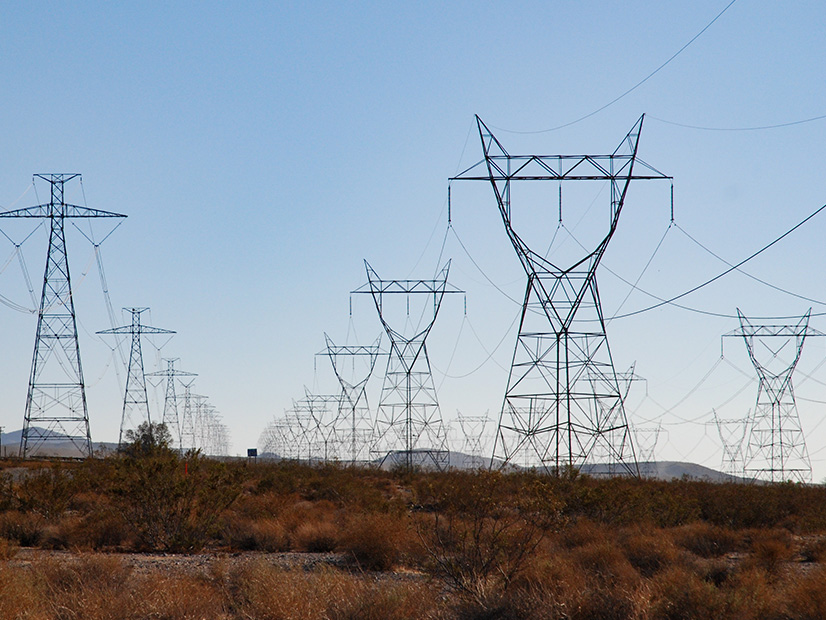The CAISO Board of Governors approved a 10-year transmission plan Thursday that far exceeds the estimated cost of any similar plan in recent years, its price driven by the proliferation of renewable resources, predicted load growth and the state’s reliability concerns.
“The need for new generation over the next 10 years has escalated rapidly, driving an accelerated pace for new transmission development in this and future planning cycles,” Neil Millar, CAISO vice president of infrastructure and operations planning, wrote in a memo to the board.
CAISO identified the need for 23 transmission projects with an estimated cost of $2.96 billion — nearly 14 times more than the $217 million average over the past five years, Millar noted.
The next highest year, 2018/19, saw a need for $644 million in transmission projects. Other years were far less. CAISO found the state needed $5 million in transmission projects last year, $142 million of projects in 2019/20, $271 million in 2017/18 and $24 million in 2016/17.
The ISO adopts a 10-year transmission plan every year, but the forecasted need often varies dramatically based on circumstances. The 2020/21 transmission plan, for example, envisioned adding 1,000 MW of new resources per year. This year’s plan estimates a need for 2,700 MW per year, while next year’s plan could boost that figure to 4,000 MW, CAISO said.
To explain the increase, CAISO cited an “accelerated pace of resource development” based on decarbonization efforts and the planned electrification of the transportation sector, which state planners expect to drive up demand. California has a goal of 100% clean energy by 2045 and a mandate that all new passenger vehicles sold in the state be electric or zero-emission vehicles by 2035.
Reliability was also an issue. CAISO said the state will need generation and transmission development because of the potential for reduced imports from other Western states and high peak loads on hot summer evenings. Both factors contributed to the rolling blackouts of August 2020 and CAISO’s re-examination of its reliability risks.
CAISO also cited the need to replace several aging gas plants and Pacific Gas and Electric’s Diablo Canyon, the state’s last nuclear power plant. All are slated to retire in the next few years.
“The transmission system will need to be expanded, upgraded and reinforced to access and integrate these resources, as well accommodate the expected resurgence in electricity consumption as transportation and other industries electrify to reduce their carbon impact,” the plan said.
Sixteen projects, with an estimated price tag of $1.4 billion, are needed to meet load growth and the state fleet’s transition to renewable resources, CAISO said. They include two HVDC projects to serve Silicon Valley and the city of San Jose. Six policy-driven transmission projects, totaling $1.5 billion, are necessary to meet the generation requirements established by the California Public Utilities Commission’s renewable portfolio standards, the ISO said.
The plan will guide implementation, including initiating a competitive solicitation process for four high-voltage projects, the ISO said in a news release.
“Approval of the plan also sets in motion contractual agreements and cost recovery for transmission upgrades through ISO transmission rates,” it said.
The 10-year plan follows CAISO’s release on Jan. 31 of a first-of-its-kind 20-year transmission outlook. The outlook predicted a need for $30.5 billion of new high-voltage lines to transport wind power long distances across the West and to carry solar, offshore wind and geothermal power from in-state California generators to urban load pockets. (See CAISO Sees $30B Need for Tx Development.)
“While the 10-year plan is required by the ISO’s federal tariff and identifies specific projects for construction, the longer outlook is designed to provide a framework and longer-term vision for the system’s future transmission needs without recommending specific projects for approval,” CAISO said. “Together, the two documents will help map the short-term, intermediate and long-term milestones of the clean-energy transition, enabling rigorous and efficient planning coordination and creating the most cost-effective and durable transmission infrastructure to serve generations to come.”



